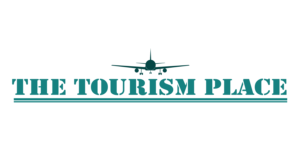The Annapurna Circuit Trek is a dream adventure for many trekking enthusiasts, offering a mix of stunning landscapes, cultural encounters, and physical challenges. However, before embarking on this iconic journey, understanding the costs involved is crucial for proper planning. From permits to gear, accommodations, and guides, this guide provides a detailed breakdown of the expenses associated with the Annapurna Circuit Trek.
Overview of Costs for the Annapurna Circuit Trek
The cost of the Annapurna Circuit Trek cost can vary depending on factors such as the season, travel style, and whether you opt for guided or independent trekking. On average, trekkers can expect to spend between $600 and $1,500 for the entire trek, including permits, transportation, accommodations, and food. Here’s a detailed breakdown of the expenses:
Permits and Fees
To trek the Annapurna Circuit, you need two essential permits:
- Annapurna Conservation Area Permit (ACAP):
- Cost: NPR 3,000 (approximately $25) per person.
- This permit allows you to enter the Annapurna Conservation Area and contributes to its maintenance and conservation.
- Trekkers’ Information Management System (TIMS) Card:
- Cost: NPR 2,000 (approximately $15) per person for independent trekkers or NPR 1,000 (approximately $8) for trekkers with guides.
- The TIMS card is essential for safety and tracking purposes.
Transportation Costs
Transportation is a significant part of your budget, as you’ll need to travel to and from the trailheads. Common options include:
- Kathmandu to Besisahar (starting point):
- Bus: $10-$15 per person.
- Private vehicle: $120-$150 (split among travelers if in a group).
- Jomsom to Pokhara (end point):
- Flight: $100-$125 per person.
- Bus or Jeep: $20-$30 per person.
These costs may vary based on the mode of transport and the season.
Accommodation Costs
Lodging along the Annapurna Circuit is affordable, with options ranging from basic tea houses to slightly more comfortable lodges. Prices depend on the location and amenities:
- Tea Houses: $2-$5 per night for a basic room.
- Mid-range Lodges: $10-$20 per night for rooms with attached bathrooms and better facilities.
During peak trekking seasons (spring and autumn), it’s advisable to book accommodations in advance or arrive early to secure a room.
Food and Drink Expenses
Food is one of the most significant daily expenses during the trek. Tea houses and lodges offer a variety of meals, with costs increasing as you ascend to higher altitudes:
- Meals: $5-$10 per meal, depending on the location. Dal Bhat, a traditional Nepali dish, is a popular and filling choice.
- Snacks: $2-$5 for energy bars, chocolates, or packaged foods.
- Drinks:
- Bottled water: $1-$3 per liter (price increases with altitude).
- Tea or coffee: $2-$4 per cup.
To save money and reduce plastic waste, consider using a water purification system or tablets to treat tap water.
Guide and Porter Fees
Hiring a guide or porter can enhance your trekking experience by providing local knowledge and reducing the physical strain:
- Guide: $25-$30 per day, including their food and accommodation.
- Porter: $15-$20 per day, including their food and accommodation.
Many trekking agencies offer guide-and-porter packages that can help streamline your logistics.
Gear and Equipment
Investing in high-quality trekking gear is essential for a safe and comfortable trek. While some trekkers already own their gear, others may need to purchase or rent equipment in Kathmandu or Pokhara:
- Sleeping Bag: $2-$3 per day (rental).
- Down Jacket: $1-$2 per day (rental).
- Trekking Poles: $1-$2 per day (rental).
Additional expenses may include proper hiking boots, waterproof jackets, thermal layers, and a sturdy backpack. Purchasing these items can range from $200 to $500, depending on quality and brand.
Miscellaneous Costs
Other costs to consider include:
- Travel Insurance: $50-$150, depending on the coverage. Ensure it includes high-altitude trekking and emergency evacuation.
- Wi-Fi and Charging:
- Wi-Fi: $2-$5 per session in tea houses.
- Charging electronic devices: $1-$3 per device.
- Tipping: It’s customary to tip guides and porters at the end of the trek. A general guideline is $5-$10 per day for guides and $3-$5 per day for porters.
Cost-Saving Tips
- Travel in Groups: Sharing costs for guides, porters, and transportation can significantly reduce expenses.
- Carry Snacks: Buying snacks in Kathmandu or Pokhara is cheaper than purchasing them on the trail.
- Avoid Peak Seasons: Traveling during off-peak times can result in lower accommodation and transportation costs.
- Negotiate Prices: Bargaining is common in Nepal, especially for transportation and rentals.
Final Thoughts
The Annapurna Circuit Trek is an unforgettable adventure that doesn’t have to break the bank. With careful planning and budgeting, you can experience the stunning beauty of the Himalayas and the rich culture of Nepal without overspending. Whether you choose to trek independently or with a guide, understanding the costs involved ensures a smooth and enjoyable journey.
FAQs
- How much does the Annapurna Circuit Trek cost on average? The trek costs approximately $600 to $1,500, depending on travel style and duration.
- Is it possible to trek on a tight budget? Yes, by opting for public transport, basic accommodations, and independent trekking, costs can be minimized.
- Are there ATMs on the trail? ATMs are scarce on the trail. It’s best to carry enough cash for the entire trek.
- Do I need a guide for the Annapurna Circuit? A guide is not mandatory but is highly recommended for safety and cultural insights.
Embarking on the Annapurna Circuit Trek is an investment in adventure, discovery, and personal growth. With the right planning, it’s an experience worth every penny.

